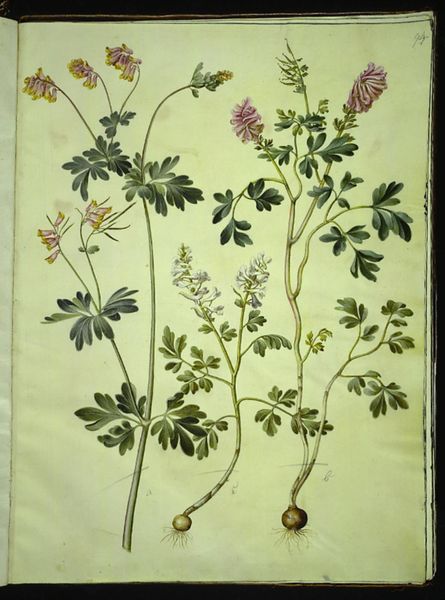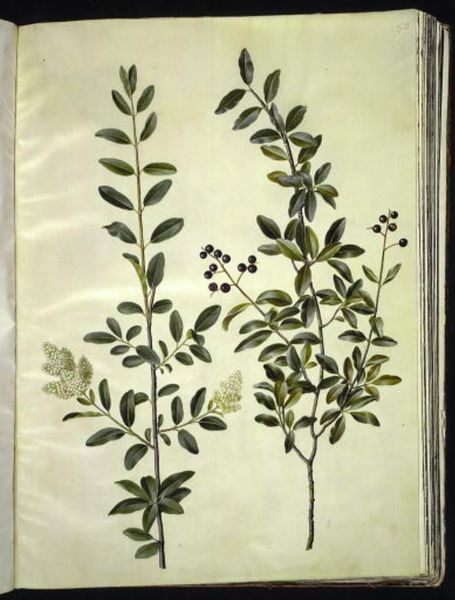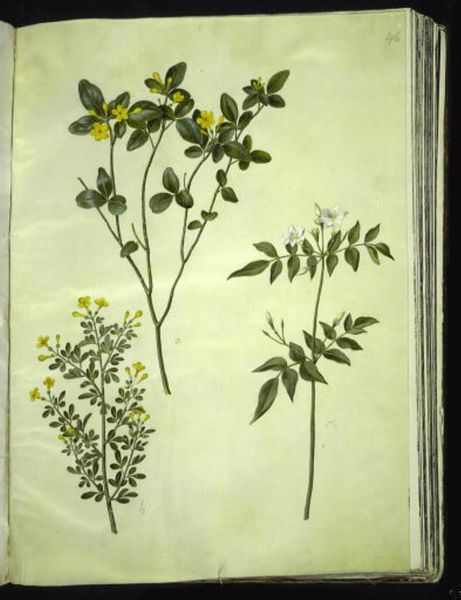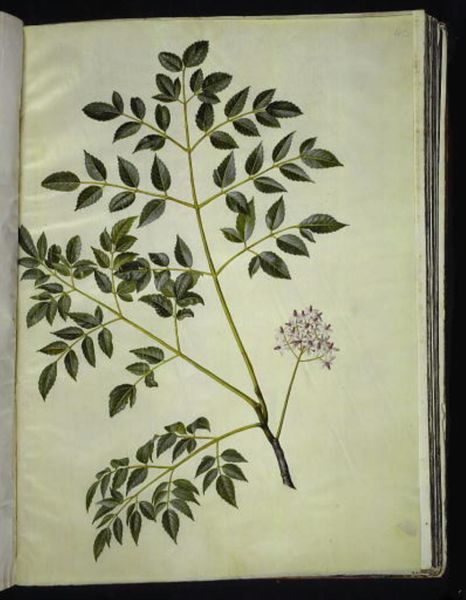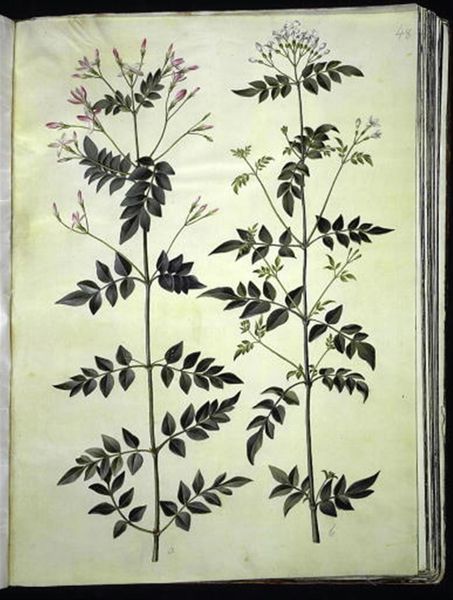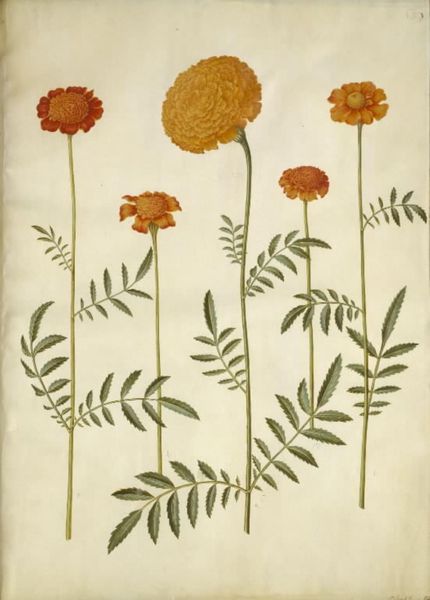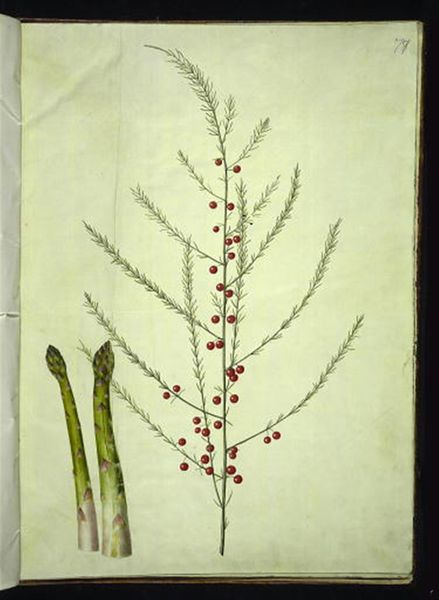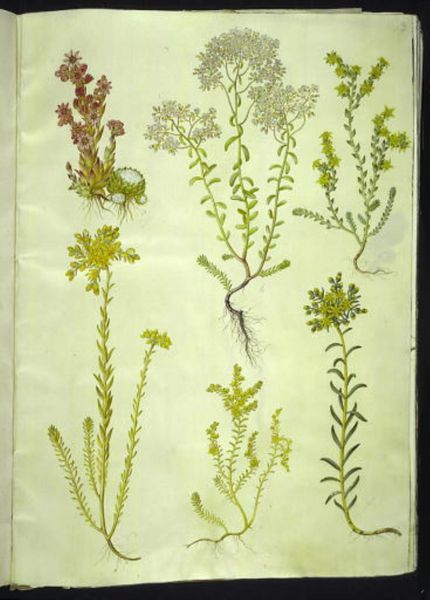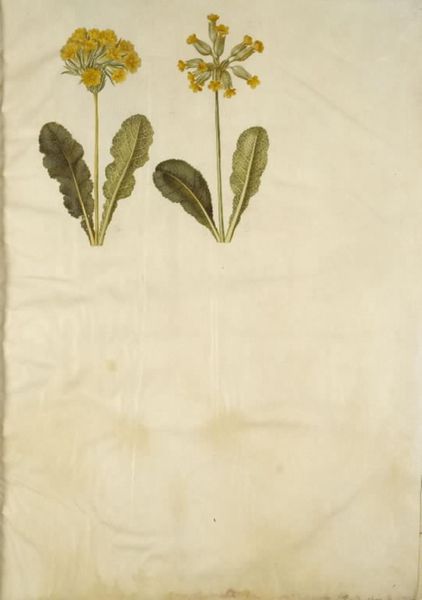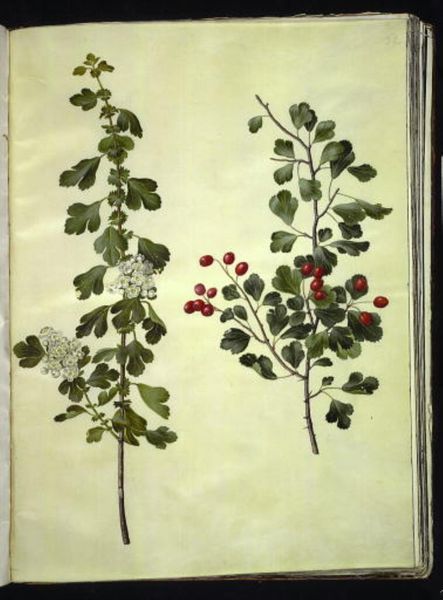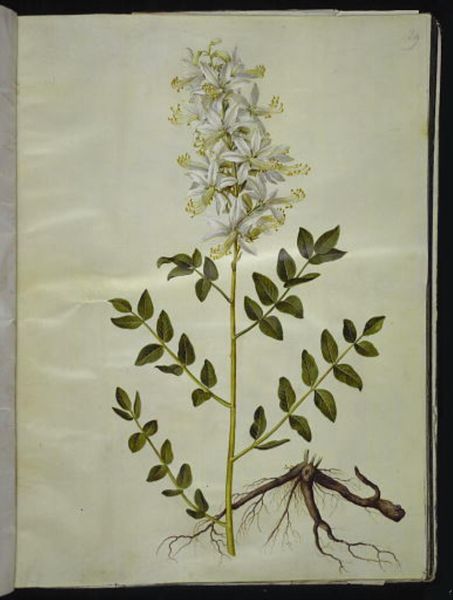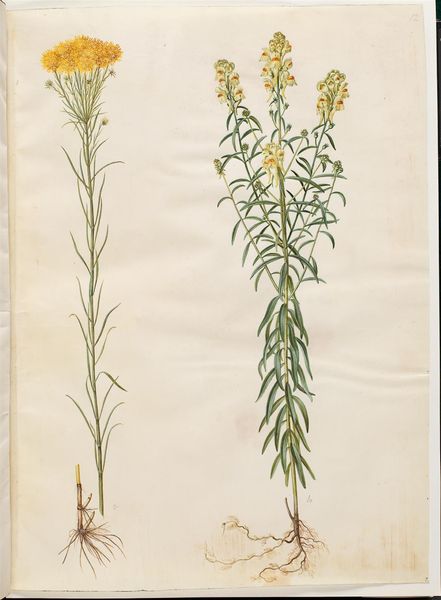
Colutea arborescens (almindelig blærebælg); Hippocrepis emerus (busk-hestesko) 1649 - 1659
0:00
0:00
drawing, painting, gouache, watercolor
#
drawing
#
water colours
#
painting
#
gouache
#
watercolor
#
coloured pencil
#
academic-art
#
botanical art
Dimensions: 505 mm (height) x 385 mm (width) (bladmaal)
Editor: This botanical illustration from between 1649 and 1659, made by Hans Simon Holtzbecker, shows two plants—*Colutea arborescens* and *Hippocrepis emerus*—rendered in watercolor and gouache. I’m struck by the detail in the leaves. What stands out to you about this piece? Curator: What I see is an early scientific method intersecting with artistic production. The pigments, sourced from minerals and plants themselves, become both subject and medium. Consider the labor involved in grinding, mixing, and applying these colors to accurately depict these plants. It's about control. Editor: Control? In what way? Curator: Control over nature, firstly. Botanical art of this period was often commissioned to document specimens, essentially claiming them through detailed representation. Think about the economic implications of knowing and controlling plant resources, for medicine, dyes, even trade. Look how precisely the artist captures the botanical details. This is not just aesthetics; it's a form of power over resources. Editor: So the artist isn't just depicting nature, but also participating in a larger system of understanding and control? Curator: Precisely. The consumption of pigments, the patronage that made the artwork possible, the knowledge gained from it - it's all interwoven. It’s a product of its time, reflecting the values of scientific exploration and economic ambition. We can examine these "natural" images to find something very socially constructed beneath the surface. Editor: That’s fascinating; I hadn’t considered the broader context of resource control within botanical art. I’ll definitely look at these works differently now. Curator: I am glad that I brought a new point of view to the artwork. There is always something else to be found, especially within materiality.
Comments
No comments
Be the first to comment and join the conversation on the ultimate creative platform.
